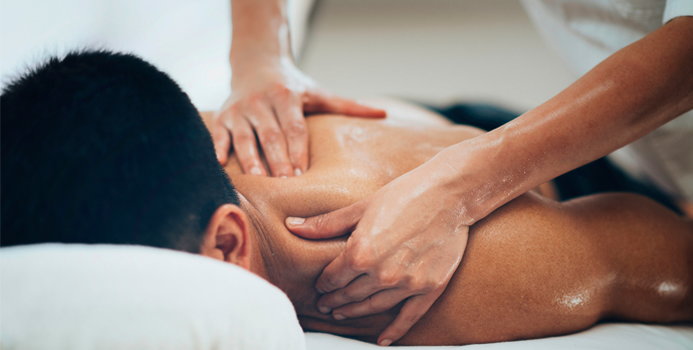If you're working out correctly, you're going to walk out of the gym with tired muscles, a sweat-soaked shirt, and a smile on your face. A truly effective workout leaves you exhausted and drained (hence the post-workout protein shake or meal), and you'll feel the tightness in your muscles for hours to come.
But what happens when that tightness turns to pain or swelling? Sore muscles can interfere with your workouts, and they can add discomfort to your life. Want to know how to speed up post-workout recovery? Here are a few tricks you can try to prevent Delayed Onset Muscle Soreness (DOMS):
- Switch it up — If you follow the same workout routine every day/week, you're only going to use certain muscles. When you use those "other" unrecruited muscles, the soreness factor is going to skyrocket. By regularly switching up the movements and exercises, you keep all of the muscles in your body working—reducing overall soreness.
- Hit the spa — Not to soak in the hot tub, but for a massage! Many athletes get weekly massages to combat sore muscles and inflammation in the joints and muscle tissue. A deep tissue massage can help to deal with any lingering soreness a day or two after a high-intensity training session.
- Hit the protein hard — A post-workout protein shake is just what the doctor ordered! The amino acids help to repair the damaged muscle fibers, preventing inflammation and pain. If you don't want to have a post-workout shake, eat your biggest, protein-heaviest meal of the day within 60 minutes of completing your workout.
- Chill out — Instead of hitting the weights, treadmill, or track at 100% intensity, take it down to 50% and do a light workout. Recovery workouts are better than total rest, as they get your blood flowing, stimulate electrical activity in your muscles, and work your joints. A light, short workout is a great way to deal with soreness.
- Compress — Compression shorts, sleeves, socks, and shirts can help to prevent inflammation in your muscles, speeding up muscle recovery. You can use gel inserts and Vicks Vapo-Rub to heat and cool your muscles as they heal.
- Rest — Sometimes your body just needs a day off. If you're training five or six days a week, you may not be giving your body enough downtime to recover. When your muscles are sore, they need time to recover. It's okay to take the occasional day to rest and recover if the soreness is bad.
- Drink up — Proper hydration can help to reduce your risk of DOMS. Drinking more water can help to flush lactic acid and toxins from your muscles, preventing the muscles from tightening (which makes them more susceptible to injury).
- Try cherry juice — Want to prevent soreness rather than treat it? A glass of tart cherry juice may be the solution. Cherries contain special anti-inflammatory properties that can reduce swelling in your muscles after an intense workout. Drink a glass of cherry juice before the workout, and the post-workout effects will be less noticeable.
- Take a bath — Soaking in an Epsom salts bath is a great way to give your body the magnesium it needs to relax your muscles. The magnesium in the Epsom salts are absorbed via your skin as you lounge in the hot water.
Try these tips to speed up post-workout recovery and prevent sore muscles from keeping you out of the gym!
[Image via Getty]



